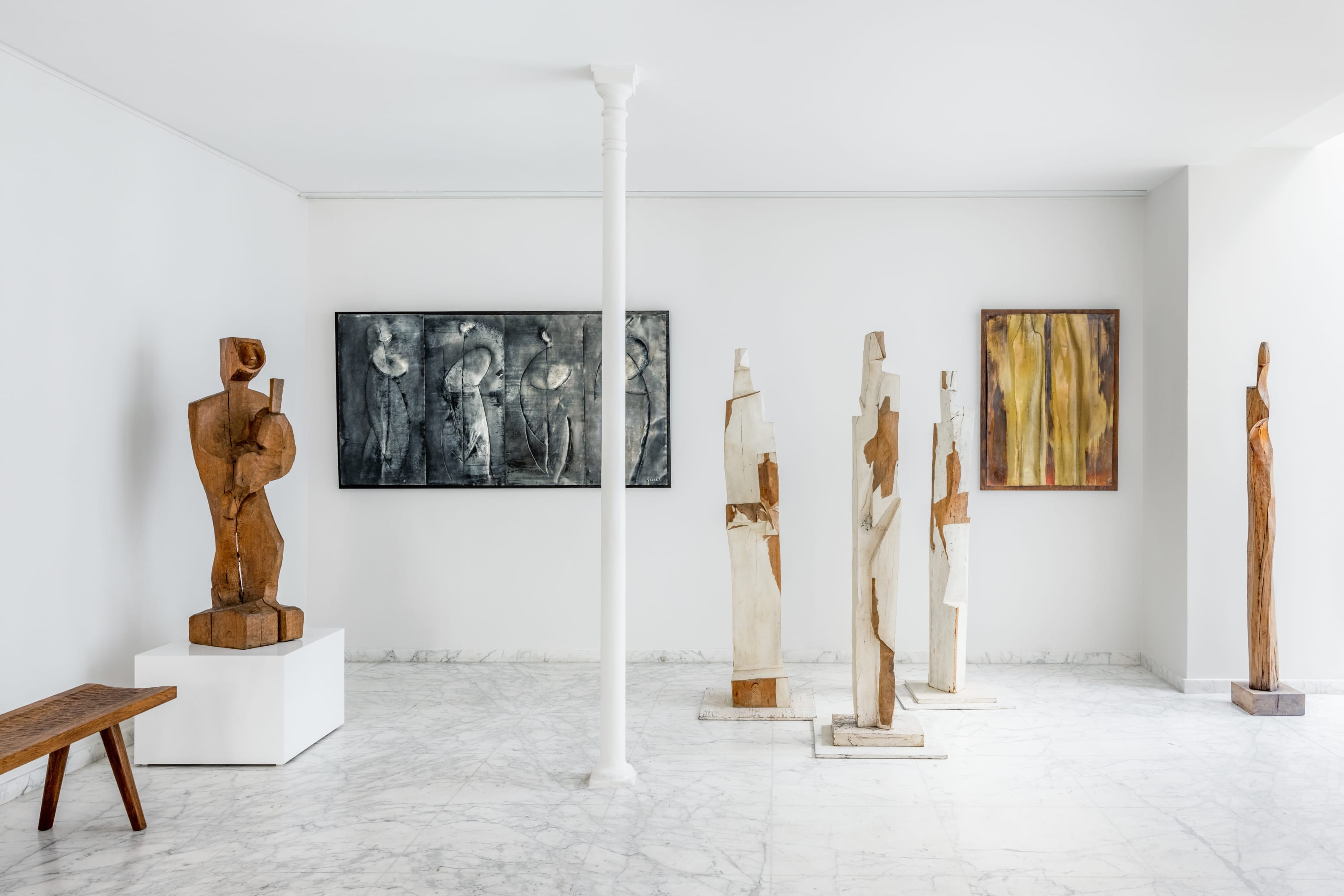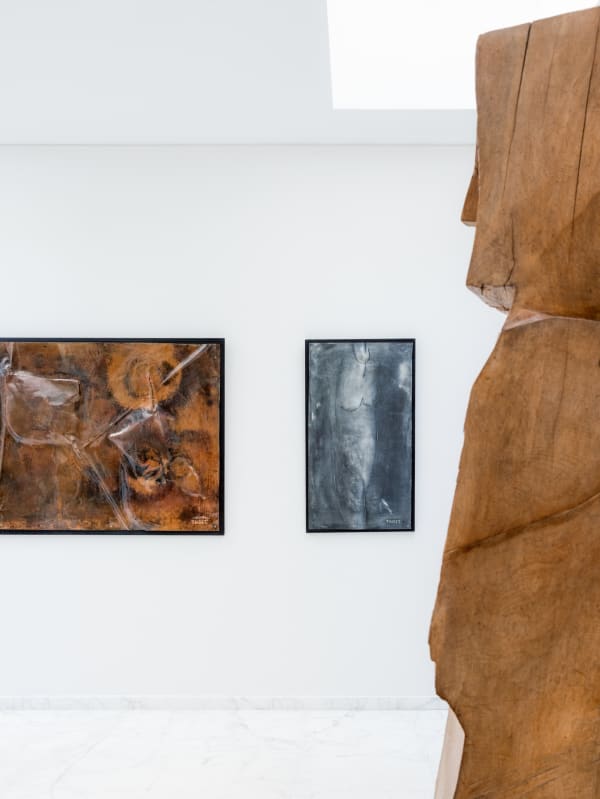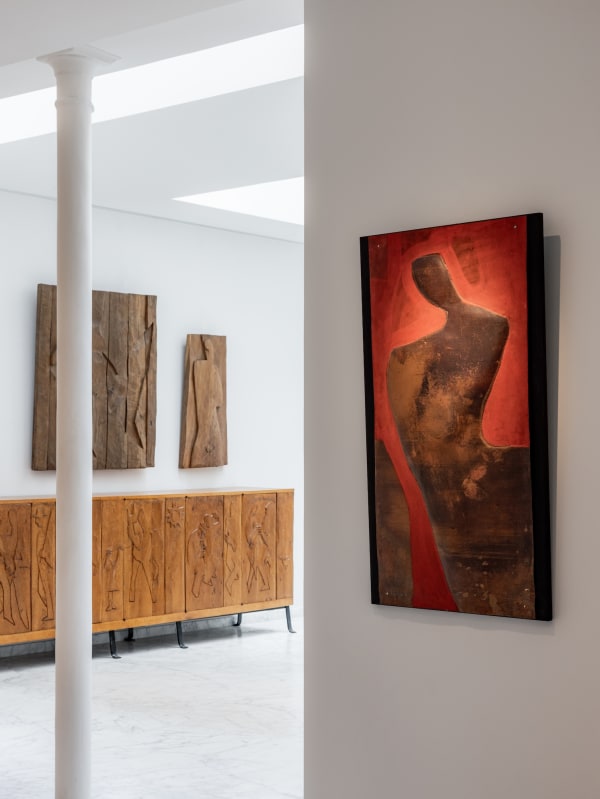-

-

-
His house overflowed with large silhouettes sculpted in tree trunks, pensive and enigmatic, as well as wall panels carved in wood and populated with figures in relief, panels in zinc or copper, embossed and incised, where dancers, musicians, and innumerable naked female formes are depicted. Of all these sculptures, Touret rarely exposed any and he never sold even one. In their message as well as their creation, they are revealed today with a troubling acuteness. In the turbulent times following the second World War, Jean Touret wanted to share his faith in beauty through his works. For him, there was an exact value, one that is comforting and is the same since the beginning of the world. This mystic had discovered and wondered at the artworks of the Lascaux and Chauvet caves. Consciously or not, he used the same techniques in his works as the artists of the Magdalenian, who used the hollows and bumps of the rock to give a troubling relief to their female bodys and engraved animals. Touret used knots in the wood and reliefs in embossed metal to give life and movement. He wanted his sculptures to be prophetic, heralding the return of joy as testimonies of eternal harmony. Touret didn't think to promote his pieces, he was too busy creating them.
-

-

The Founding Group: Émile Leroy, Manuel Gold, Henri Vion, Jean Touret et Edmond Le Flohic (c. 1950)
-
Back home, and conscious of the fragility of life, he is determined to devote his existence to art, even as his mother threatened to curse him for it. His determination is as strong as his life's energy. He settles in Marolles to paint, a small village in the Beauce region just outside Paris. He helps the peasants with the harvest, creating friendships in the local café and tobacco shop. This neo-rural before his time, with his glasses, his pipe and his bicycle, changed the life of the surrounding area that had become numb on the edge of modernisation. Jean Touret meets a weaver, a blacksmith, and a carpenter, and their know-how fascinates him. For him, nothing is more noble than to work an ancestral material with one's hands. He launches the ateliers of Marolles, for whom he draws the designs of tables, lamps and buffets, created by the artisans of the village and the surrounding area. They are a sensation, a true phenomenon of the society. Artists and intellectuals alike flock to Marolles. But for Jean Touret, the essential is elsewhere: he begins to sculpt wood, and this is his revelation.
-
 Atelier de Marolles sideboard, 4 appliquesH. 91 x 200 x 50 cmEdition of 8 + 4 AP
Atelier de Marolles sideboard, 4 appliquesH. 91 x 200 x 50 cmEdition of 8 + 4 AP -

-

Jean Touret: Résurrection
Past viewing_room























